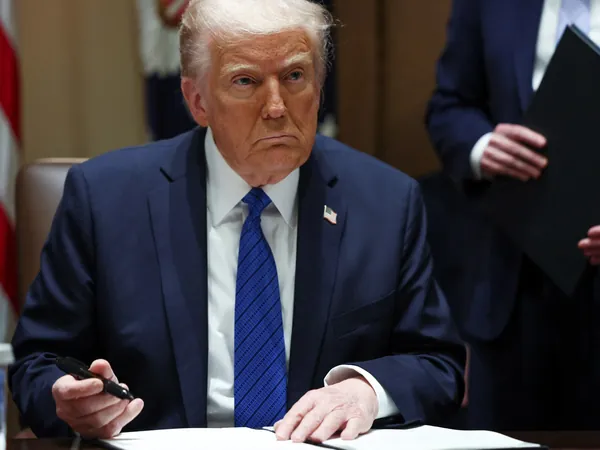
Trump Unveils Controversial Executive Order Targeting Election Integrity: Here’s What You Need to Know!
2025-03-26
Author: Benjamin
In a highly contentious move, United States President Donald Trump has signed a new executive order that he claims will strengthen election integrity ahead of the pivotal 2026 midterm elections. The order, titled “Preserving and Protecting the Integrity of American Elections,” aims to address alleged widespread election fraud—a claim he has made repeatedly, albeit without evidence.
Key Features of the Executive Order
1. Proof of Citizenship Requirement:
The order mandates that voters present official proof of U.S. citizenship, such as a passport or birth certificate, prior to voting. This requirement, ostensibly designed to prevent non-citizens from participating in federal elections, has raised alarms among voting rights advocates. Critics argue that it could disenfranchise millions of eligible voters, particularly those lacking easy access to such documents.
Richard Hasen, a respected election law expert at UCLA, expressed concern that the new rule may disproportionately affect individuals without passports, which includes approximately 146 million Americans, as well as married women whose legal documents may reflect their maiden names.
2. Submission Deadline for Ballots:
The order stipulates that all mail-in ballots must be received by Election Day to be counted. Currently, numerous states have varying rules regarding ballot acceptance, with some allowing ballots postmarked by Election Day to be counted if they arrive later. Notably, California permits ballots to be counted for up to seven days after the election. This initiative aims to standardize the voting process across different states, but it could significantly impact voters who rely on mail-in ballots.
3. Federal Funding Strictures:
States that fail to comply with the new order risk losing vital federal election funds. The executive order empowers the Attorney General to take action against states that count late-arriving ballots, placing financial pressure on those with more lenient voting procedures. This stems from a broader scheme where federal funding is contingent upon adherence to strict election integrity measures.
In March 2024, Congress allocated $55 million under the Help America Vote Act to improve the administration and security of elections, but states that do not conform to the new order may find future funding compromised.
4. Data Sharing and Oversight:
Under the executive order, the Secretary of Homeland Security, Kristi Noem, is directed to provide states with access to systems for verifying voters' citizenship. The Department of Homeland Security and the newly formed Department of Government Efficiency, led by Elon Musk, will also review state voter registration lists and may use subpoenas as necessary. This aspect of the order raises questions about privacy and the potential chilling effect on voter registration.
Will Legal Challenges Emerge?
Legal experts anticipate that the executive order will face challenges due to constitutional restrictions that grant states authority over their own election processes. Arizona Secretary of State Adrian Fontes has already signaled a willingness to explore litigation, framing the order as an attempt to "federalize elections" and alter public perception of electoral misconduct. Fontes characterized the executive order as a methodical and concerning strategy that risks undermining the democratic process.
Support from Conservative Circles:
While the order faces opposition, it has garnered approval from conservative groups such as the Heritage Foundation. Supporters argue that it provides necessary resources and federal backing to enhance state efforts in election reform—efforts they claim were lacking during the Biden administration.
As the political landscape continues to evolve, this executive order may set the stage for heated debates and significant legal battles in the coming months. The implications of these measures could have a lasting impact on the electoral process as we approach the 2026 midterm elections. Keep your eyes peeled for updates, as this story is still unfolding!









 Brasil (PT)
Brasil (PT)
 Canada (EN)
Canada (EN)
 Chile (ES)
Chile (ES)
 Česko (CS)
Česko (CS)
 대한민국 (KO)
대한민국 (KO)
 España (ES)
España (ES)
 France (FR)
France (FR)
 Hong Kong (EN)
Hong Kong (EN)
 Italia (IT)
Italia (IT)
 日本 (JA)
日本 (JA)
 Magyarország (HU)
Magyarország (HU)
 Norge (NO)
Norge (NO)
 Polska (PL)
Polska (PL)
 Schweiz (DE)
Schweiz (DE)
 Singapore (EN)
Singapore (EN)
 Sverige (SV)
Sverige (SV)
 Suomi (FI)
Suomi (FI)
 Türkiye (TR)
Türkiye (TR)
 الإمارات العربية المتحدة (AR)
الإمارات العربية المتحدة (AR)